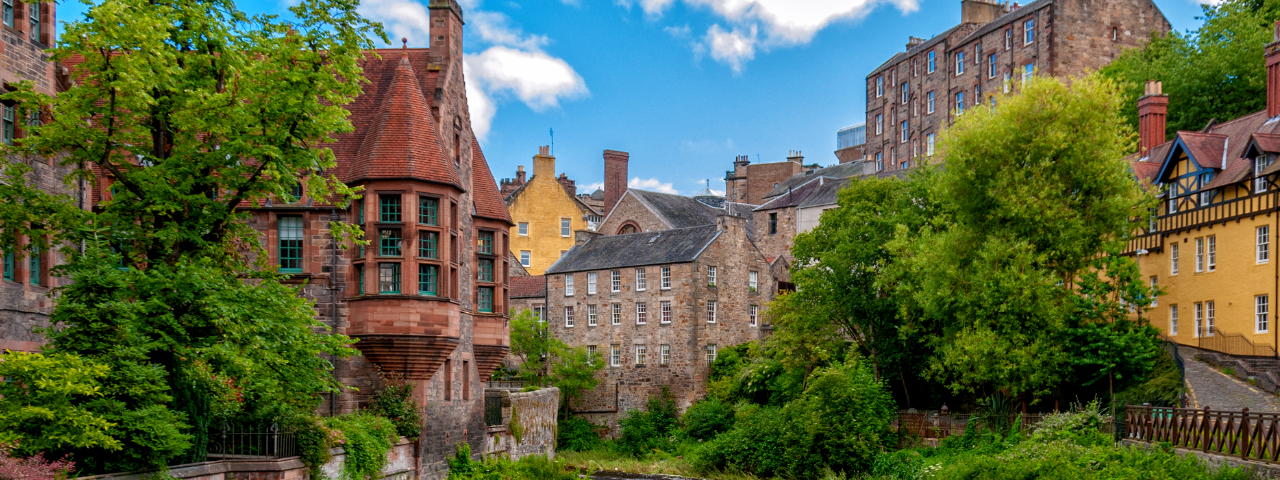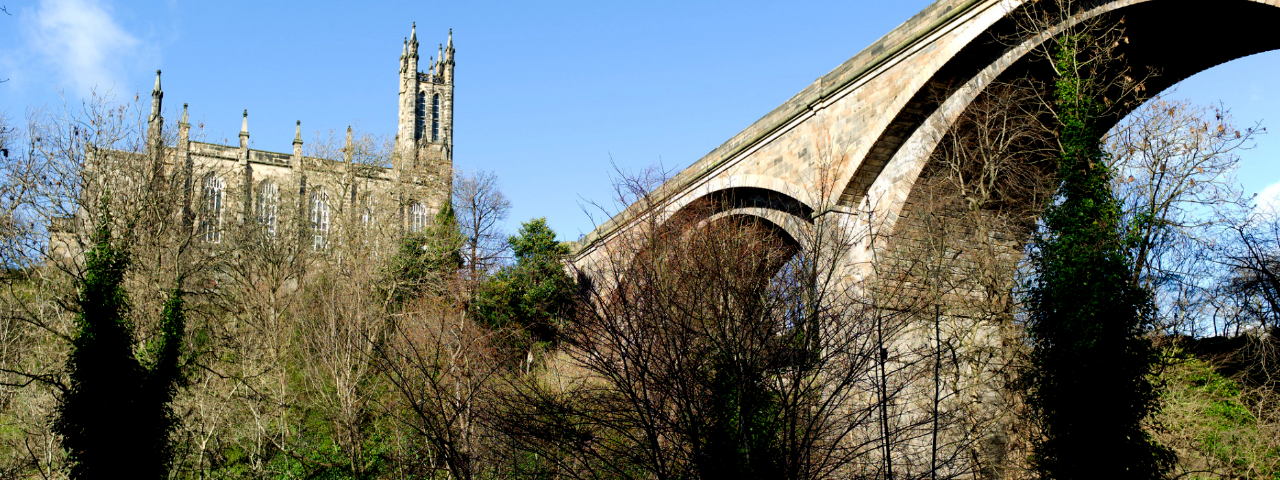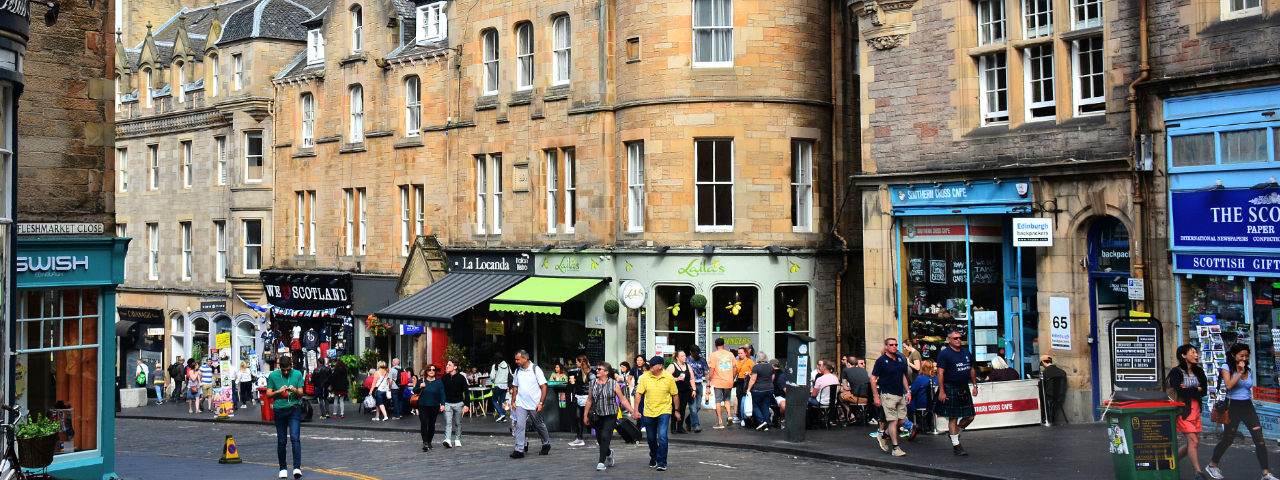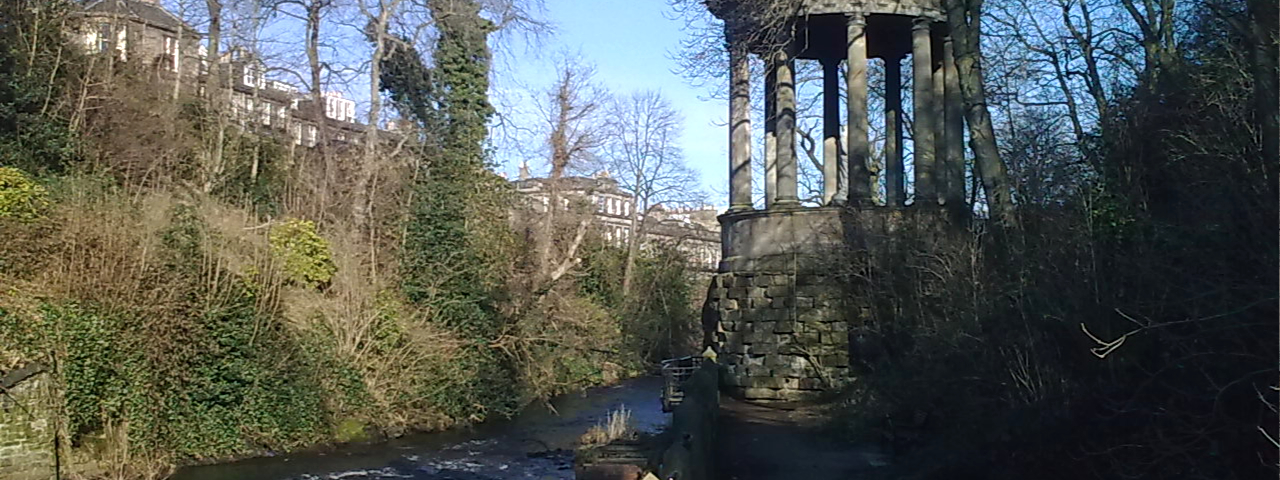
JayWalks Edinburgh
Walking tours of the Dean Village and the Stockbridge District of Edinburgh

Dean Village
12th–17th centuries Dean Village, deriving its name from the Scots word dene (meaning "deep valley"), emerged as a key milling settlement along the Water of Leith. Its earliest documented mention appears in King David I’s founding charter of Holyrood Abbey around 1145, when one of the local mills was granted to the abbey. Over the centuries, up to eleven water-powered mills sprang up in the village — grinding grain to supply Edinburgh’s bakers, particularly those affiliated with the Edinburgh Incorporated Trade of Baxters. In 1592, James Lindsay, 7th Lord Lindsay of the Byres, was granted the Dean estate, including its mills. The property changed hands in 1609, when Sir William Nisbet acquired it and likely constructed or remodeled the tower house known as Dean House. By the 1880s, Dean Village had slipped into disrepair. In response, newspaper proprietor John Ritchie Findlay commissioned the architect Sydney Mitchell to design Well Court — a striking courtyard of red-sandstone tenements with a clock tower, intended as respectable housing for local workers. By mid-20th century, Dean had become associated with poverty and decay. But starting in the 1970s, a wave of restoration began—workers’ cottages, old mills, and warehouses were refurbished into residential properties.
Learn More
Stockbridge
Stockbridge derives from the Scots term “stock brig”, meaning either timber bridge or possibly cattle bridge, referring to the wooden footbridge over the Water of Leith that served as a crucial crossing point on the main route north of Edinburgh. Until the early 19th century, Stockbridge remained a small, independent village with cottages and mills. In 1786 a stone bridge replaced the wooden one, but only from the 1810s did the area begin to see serious development. In the late 18th century, Stockbridge became known for St Bernard’s Well, where locals and visitors believed in the healing properties of its waters. In 1789, architect Alexander Nasmyth designed a Greek temple-style pump house there, later enhanced by a statue of Hygieia by publisher William Nelson. The celebrated portrait painter Sir Henry Raeburn bought much of the area in the 1790s and—alongside architect James Milne—developed residential estates like Anne Street and St Bernard’s Crescent. He featured innovative layouts, such as Ann Street’s front gardens, rare in Edinburgh’s New Town. Today, Stockbridge is famed for its independent shops, cafés, boutiques, and a vibrant artsy scene—retaining a charming village feel despite being central to the city.
Learn More
Water of Leith
The Water of Leith is the main river that flows through Edinburgh, Scotland, and it has a rich and varied history that is deeply intertwined with the development of the city. Evidence of human use of the river dates back to prehistoric times, with Neolithic and Bronze Age remains found along its banks. The river provided water and a strategic location for early settlements. The Water of Leith was Edinburgh's industrial powerhouse for centuries. By the late 1700s, there were as many as 76 mills along the river's 24-mile course. These mills harnessed the river's energy to power various industries, including grinding grain, spices, and snuff. Other industries that utilised the river included paper making, textile production, tanning hides and timber and stone cutting. The river's mouth at Leith was of strategic importance for trade and was Edinburgh's principal port. It supported a thriving shipping and shipbuilding industry. The Water of Leith Conservation Trust, a registered charity, was founded in 1988 to protect and enhance the river environment. Created as a Millennium Project, The Water of Leith Walkway follows the old industrial routes and former railway lines from Balerno to Leith, offering a popular urban haven for walking, cycling, and enjoying nature.
Learn More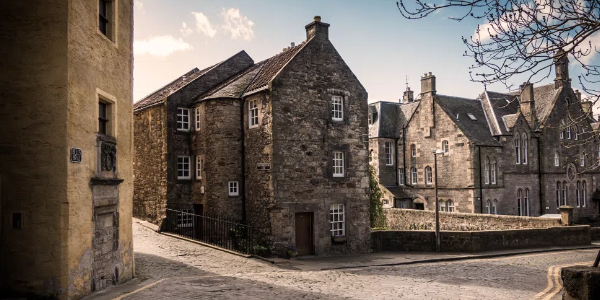
Dean Village
Over the centuries, up to eleven water-powered mills sprang up in the village — grinding grain to supply Edinburgh’s bakers, particularly those affiliated with the Edinburgh Incorporated Trade of Baxters. In 1592, James Lindsay, 7th Lord Lindsay of the Byres, was granted the Dean estate, including its mills. The property changed hands in 1609, when Sir William Nisbet acquired it and likely constructed or remodeled the tower house known as Dean House. By the 1880s, Dean Village had slipped into disrepair. In response, newspaper proprietor John Ritchie Findlay commissioned the architect Sydney Mitchell to design Well Court — a striking courtyard of red-sandstone tenements with a clock tower, intended as respectable housing for local workers. By mid-20th century, Dean had become associated with poverty and decay. But starting in the 1970s, a wave of restoration began—workers’ cottages, old mills, and warehouses were refurbished into residential properties. The creation of the Water of Leith Walkway in 1983 further enhanced the area's charm and accessibility.
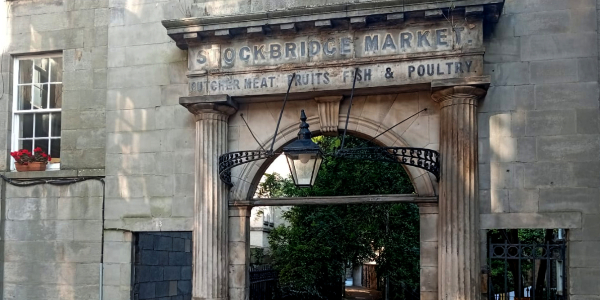
Stockbridge District
Mid-19th century industrial growth along the Water of Leith—especially mills for flour, cloth, and paper—helped pull Stockbridge into Edinburgh's expanding urban fabric. Between 1861 and 1911, the Edinburgh Co-operative Building Company built the celebrated "Colony houses"—parallel terraces designed with upper and lower flats, each with its own front door and garden. This co-operative venture aimed to improve housing for artisans and skilled workers, inspired by the Free Church-led movement. The Stockbridge Market archway stands as a historic reminder of the bustling market that operated from 1825 to 1906, offering everything from butcher meat to poultry. After 75 years, the market closed due to complaints of noise and smell. While that specific market is no longer around, Stockbridge’s Farmers' Market thrives every Sunday. Today, Stockbridge is famed for its independent shops, cafés, boutiques, and a vibrant artsy scene—retaining a charming village feel despite being central to the city.
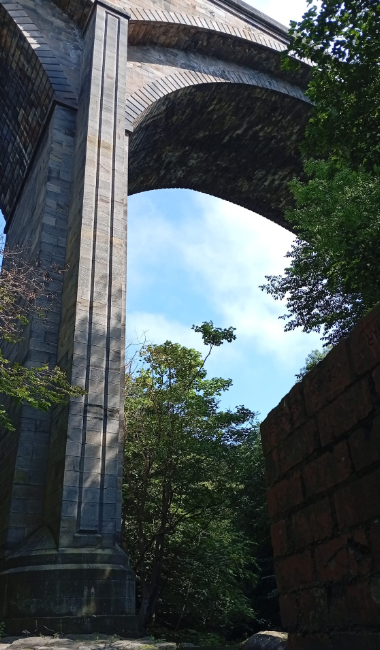
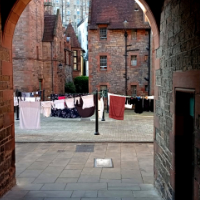
Well Court - Dean Village
Well Court is a rare example of an arts and crafts building in Edinburgh and is recognised as one of the best examples of the work of Sydney Mitchell, an important Scottish architect of the time. The building improved the area and took account of earlier traditional buildings in the area.
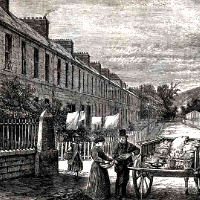
Stockbridge Colonies
The ‘Colonies’ built in the latter half of the nineteenth century at Stockbridge and elsewhere in Leith and Edinburgh housed over 7000 people at one time, and all of them still stand today, some of them (at Stockbridge and Dalry) now being ‘listed’ (i.e. specially protected buildings of architectural or historic interest).
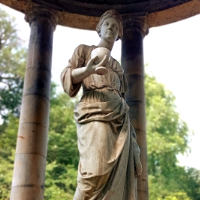
St Bernard's Well
Above the Water of Leith stands a statue of the Greek Goddess of Health, Hygeia. In 1760 a natural spring was allegedly discovered by three members of George Heriot's. "Taking the waters" was said to be an effective remedy for healing various maladies.The design was by Edinburgh painter Alex Nasmyth, best known for his portrait of Scotland's national poet, Robert Burns.
Contact Us
We provide entertaining and informative guided tours of the Dean Village, Stockbridge and the Water of Leith.
Our senior guide, John, born in Edinburgh, has conducted walking tours in various districts of London.
He is now resident in the Stockbridge area and has an excellent local knowledge, both past and present.
Feel free to ask him for present day information about bars, restaurants, hotels etc.
tel - +44 79 90 49 74 52
email - info@jaywalksedinburgh.com
